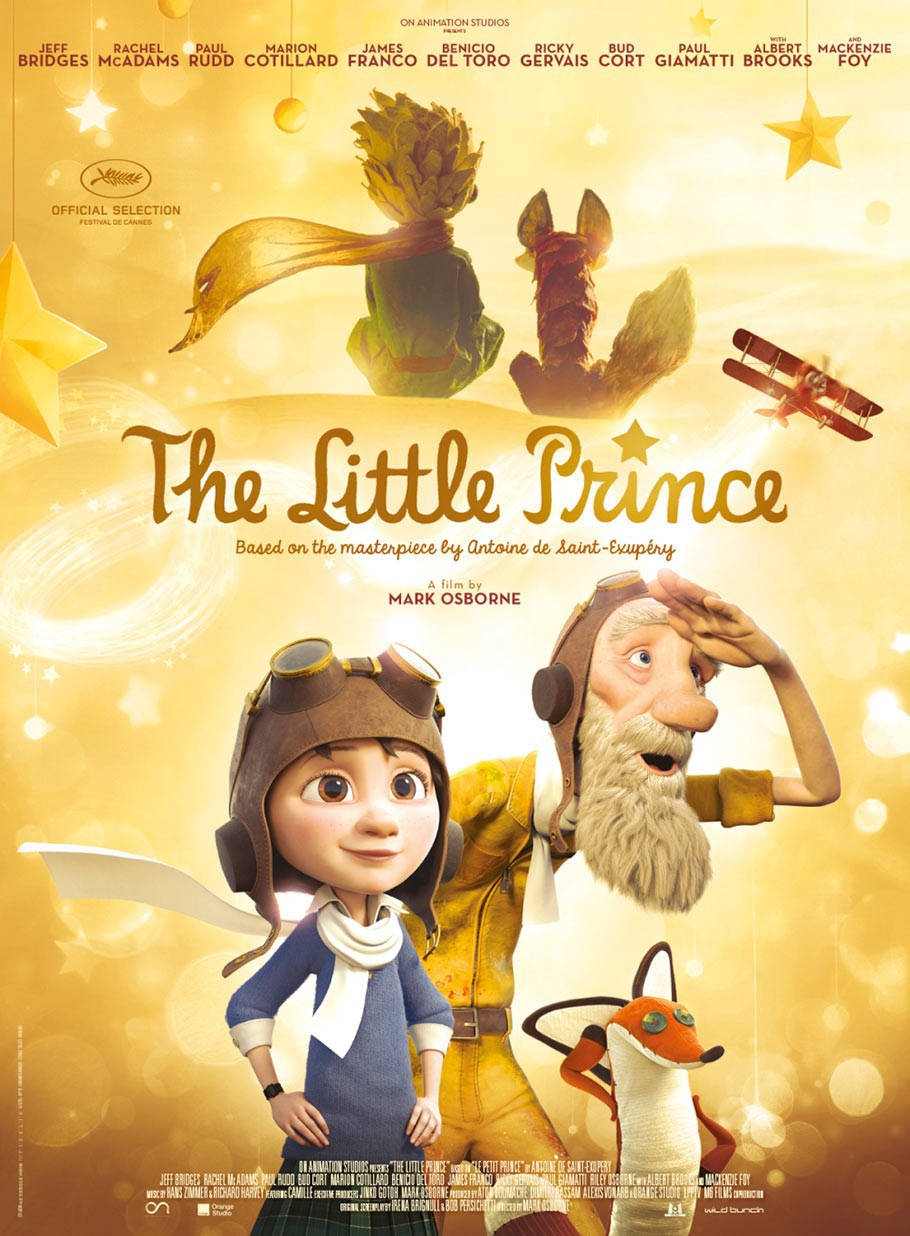“One sees clearly only with the heart. What is essential is invisible to the eye.”
In The Little Prince the depiction of foxes defies conventional animality as they generally symbolise perfidy. But The Fox here is characterised as holding pragmatic intellectual power. He is a teacher but does not hold any other forms of power, like physical strength. A bird’s eye shot initiates this scene as The Prince and The Fox run through a bright yellow field of wheat, with only The Fox’s tail visible. The Prince interrogatively follows The Fox, although The Fox is ambiguous in age, they are aligned through naturality and receptiveness. Subsequently, The Fox makes graceful and rhythmic movements through the wheat hiding from The Prince who laughs innocently. An effervescent song accompanies, emanating a playful mood with the diegetic sounds of the wind and the rustling of leaves. These features exemplify the consequential merge of animal with human, shortening the somatic distance between the two characters.
Interestingly, BBC Wildlife claim that foxes are individual and lonely animals, so his request to be tamed simultaneously is anomalous to bonafide qualities but shows a level of agency. However, this freedom is dubious as The Foxs’ belief is altruistically human, as humans notoriously domesticate animals. Therefore, The Fox is represented as an object for The Prince, solely necessary in the plot for his progression. He leads The Prince who mimics his careless wandering into the rose garden which catalyses the influence of his teachings. The camera follows their steps, framing a deep focus on their conversation of The Fox’s knowledge about The Prince’s Rose. {Figure 3} We see their power dynamic shift when a reframing occurs from a wide angle shot, which initially demonstrates a distance and air of caution and intrigue, to a closer shot. This zoom signifies their eventual bond and vulnerability building trust between them. The Fox’s head rests on The Prince’s lap, then leans in to share a secret; this taction with The Prince minimises the distance introspectively.
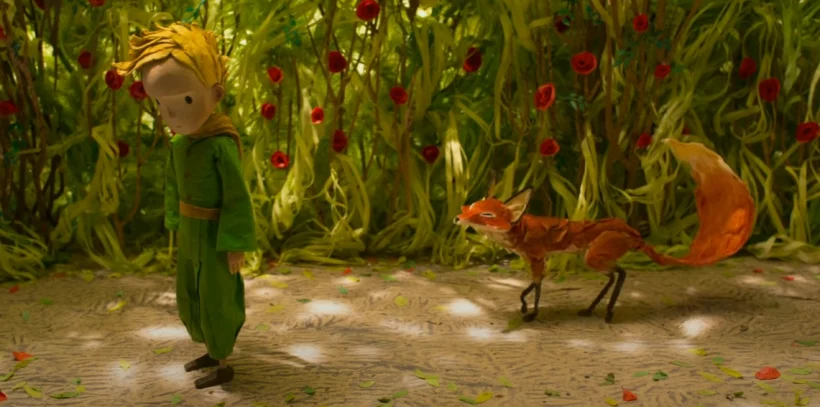
Although The Little Prince does not directly introduce the effects of such close proximity, Lynch suggests that even during domestication experiments on foxes can result in receptive and playful behaviour contrasting to when untamed. Much like how the tree on the hill is natural, but the grass surrounded by the desert is not. Therefore, The Princeby being unnaturally situated on said hill augments a bond between the two despite environmental factors. The shifting distance and The Fox’s acquiescence to being tamed, significantly facilitates rapport. Additionally, it prepares The Prince for his future interactions with other characters.
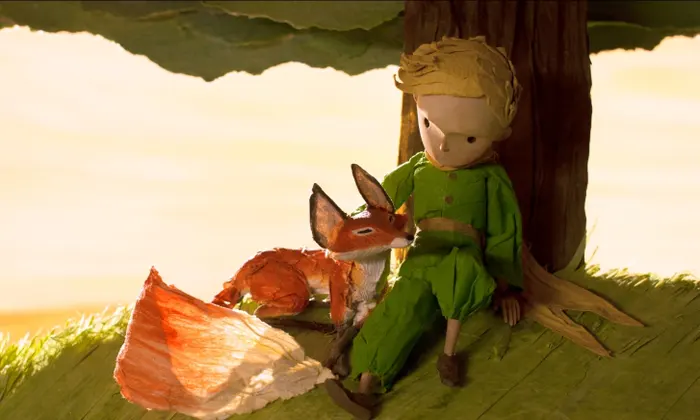
{ Figure 2 } 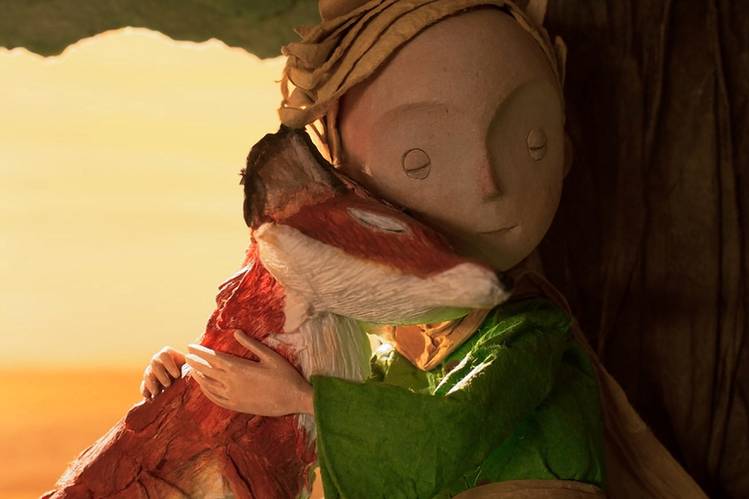
{ Figure 3 }
Together they take up a small part of the frame, sharing the space on screen, showing them to be on the same level of confidence, both being illuminated. The mise-en-scene {Figures 2 + 3} of contrasting, bright colours and vivid illustrations appeals to younger target audiences with a sense of maturity regarding the plot, as complex topics like relationships are discussed. The foxes’ unconventional animality is significant in representing how dynamics can transform within oneself along with one’s surroundings. As they deviate from conventions, they can together impersonate friendship reminiscent of a human’s bond with a dog. Thus, The Fox being tamed valorises and strengthens their familiarity mentally and otherwise.
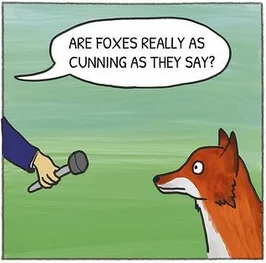
Bibliography
The Little Prince, dir. by Mark Osborne (Paramount Pictures, 2015), online film recording, Netflix, <https://www.netflix.com/search?q=the%20little%20prince&jbv=80057578> [accessed 12 January 2023].
Tarazona, Ariel M., Maria C. Ceballos, and Donald M. Broom, ‘Human Relationships with Domestic and Other Animals: One Health, One Welfare, One Biology’, Animals (Basel), 10.1 (2020), 43
Lynch, William T, ‘The Domestication of Animals and the Roots of the Anthropocene’, Journal of the History of Biology (Dordrecht: Springer, 2019), 209–17
Dugatkin, Lee Alan, ‘The Silver Fox Domestication Experiment’, Resonance, 25.7 (2020), 987–1000
Birmingham and Black Country Wildlife Trust, ‘Urban foxes, your questions answered’, <https://www.bbcwildlife.org.uk/urban-fox> [accessed 15 January 2023].
Further Reading
Lobo, Diana, Raquel Linheiro, Raquel Godinho, and John Patrick Archer, ‘On Taming the Effect of Transcript Level Intra-Condition Count Variation During Differential Expression Analysis: A Story of Dogs, Foxes and Wolves’, PloS One, 17.9 (2022), e0274591–e0274591
Saint-Exupéry, Antoine de, and Katherine Woods, ‘The Little Prince’, [New ed.]. (London: Egmont, 2009)
Hale, Elizabeth, and Michael Allen Fox, ‘Childhood and the Environment in The Little Prince.(Critical Essay)’, Dalhousie Review, 93.2 (2013), 289
